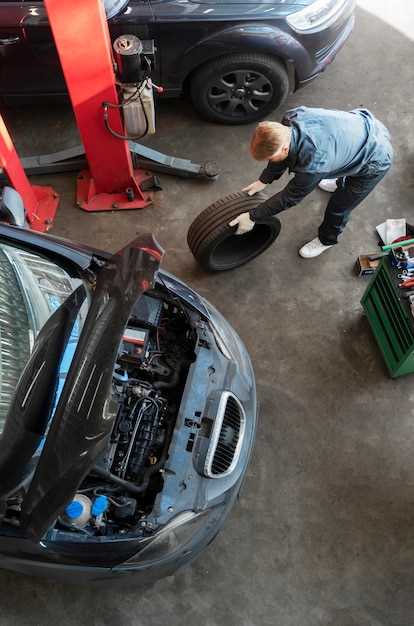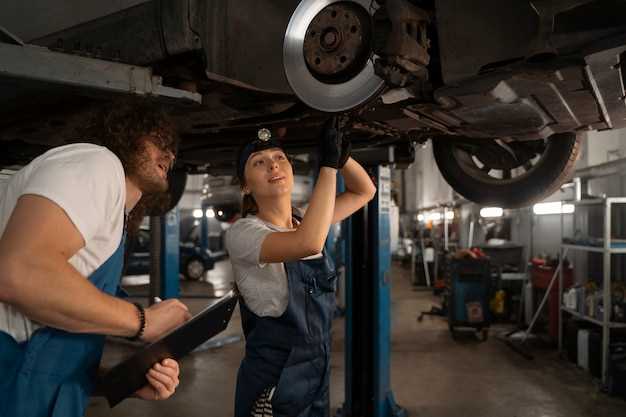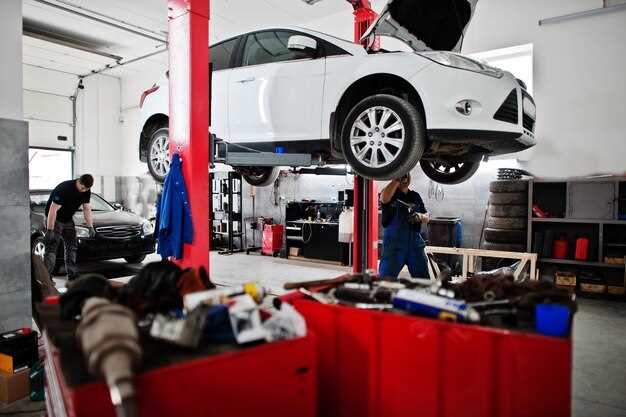
When it comes to maintaining a race car, having the right equipment is crucial. The maintenance process can vary greatly, but one constant is the need for reliable lifting tools. Whether you are working on the suspension, brakes, or any other critical component, a high-quality jack or lift can make all the difference in efficiency and safety.
There are several types of jacks available on the market, each designed to meet specific needs within the racing community. From hydraulic floor jacks to scissor jacks, the choice largely depends on the type of race car and the particular maintenance tasks at hand. For those serious about racing, investing in a top-tier lift offers greater convenience and versatility.
Using the appropriate lifting equipment not only speeds up the maintenance process but also ensures that it is performed correctly. In this article, we will explore the best jacks and lifts that provide the necessary support and stability for race car maintenance, allowing you to focus on what really matters–getting back on the track efficiently and safely.
Choosing the Right Car Lift for Your Garage Space
Selecting the appropriate car lift for your garage is essential for effective race car maintenance. Consider the available space in your garage, as well as the types of vehicles you will be lifting. A two-post lift is a popular choice for performance and race cars, offering the convenience of clear access to the undercarriage. Ensure that your ceiling height allows for sufficient clearance when raising the vehicle.
Another option is the four-post lift, which provides additional stability and is particularly useful for storing race cars in a vertical position. These lifts are ideal for garages with ample width but limited ceiling height. They typically come with space-saving features, allowing you to maximize storage without compromising accessibility.
When selecting a lift, consider the weight capacity required for the race cars you work on. Most lifts range from 7,000 to 10,000 pounds capacity, accommodating a variety of vehicles. It’s crucial to choose a lift that can support your heaviest race car to ensure safety and efficiency during maintenance tasks.
Lastly, factor in power source options–hydraulic or electric lifts vary in installation and functionality. Hydraulic lifts are often favored for their reliability and simplicity, while electric lifts may offer faster operations. Ultimately, the choice will depend on your garage configuration and personal preferences for race car maintenance.
Comparing Different Types of Race Jacks: Floor vs. Bottle Jacks

When it comes to maintaining race cars, having the right lifting equipment is crucial. Two popular types of jacks used in the racing community are floor jacks and bottle jacks. Understanding the differences between them can help race teams select the best option for their needs.
Floor jacks are known for their wide base and low profile, making them ideal for accessing a race car’s undercarriage. They typically feature a long handle that allows for easier maneuvering and lifting of heavier vehicles. With a greater lifting range and greater stability, floor jacks are often preferred for quick tire changes and general maintenance tasks. Their hydraulic systems enable smooth lifting without straining the operator.
On the other hand, bottle jacks are compact and powerful. Their vertical design takes up less space, which is advantageous in tight garages or during transport to race events. Bottle jacks excel in situations requiring a significant lift height, making them suitable for lifting vehicles with high clearance. However, they often lack the stability of floor jacks due to their smaller base, which can be a concern when lifting heavier race cars.
In terms of weight capacity, both jacks come in various models to support different sizes of cars. Floor jacks generally offer a higher weight limit, while bottle jacks may vary, so it’s essential to choose a jack that meets the requirements of the specific race car being serviced. Additionally, portability is a factor; floor jacks can be cumbersome, while bottle jacks are typically more lightweight and easier to transport.
Ultimately, the choice between a floor jack and a bottle jack depends on the specific maintenance needs and space considerations of a racing team. Each type provides unique advantages that can enhance efficiency during race car maintenance tasks.
Key Features to Look for in a Race Car Lift

When selecting a race car lift, there are several essential features to consider that can significantly impact maintenance efficiency and safety. First and foremost, lifting capacity is critical; ensure that the lift can support the weight of your specific car model, including any modifications that may add extra weight.
Next, consider the lift’s height range. A lift that offers a substantial lift height allows for greater access to the undercarriage, making it easier to perform extensive maintenance tasks. Look for a model with adjustable heights to accommodate different vehicles.
Safety features should be a top priority. Choose a lift with sturdy support arms, locking mechanisms, and anti-slip surfaces. These features are crucial to ensure stability while the car is elevated, reducing the risk of accidents.
Speed and efficiency are also important. Some lifts come with hydraulic systems that allow for quick lifting and lowering, saving valuable time during maintenance. Additionally, ease of use is essential; opt for a lift that has straightforward operation controls, making it easy for both seasoned mechanics and novices to handle.
Finally, consider the overall build quality and materials used. A durable, corrosion-resistant frame will ensure longevity and reliable performance. Investing in a high-quality lift may save money in the long run, reducing the need for frequent repairs or replacements.
Safety Considerations When Using Jacks and Lifts
When performing maintenance on race cars, safety should always be a top priority. Jacks and lifts are essential tools for accessing the undercarriage and components of vehicles, but their misuse can lead to severe injuries. Before utilizing any jack or lift, ensure that you follow proper guidelines to create a safe working environment.
First and foremost, always inspect your jack or lift before use. Check for any signs of wear or damage, such as leaks, cracks, or rust. A compromised jack can fail under load, resulting in a dangerous situation. Use only equipment that is rated for the weight of the race car to prevent accidents.
Ensure that the jack is positioned on a flat, stable surface. Uneven or soft ground can cause the jack to tip or sink, leading to catastrophic failure. Place wheel chocks behind the rear wheels to prevent movement during lifting, especially for rear-wheel drive race cars. This added precaution is critical for maintaining stability.
Always utilize jack stands in conjunction with a jack when lifting a car. A jack alone is not sufficient for holding the car securely while maintenance is performed. Once the car is lifted to the desired height, engage the jack stands to provide additional support. This practice significantly lowers the risk of falls.
Wear appropriate personal protective equipment (PPE) when working under a lifted car. Safety goggles can protect your eyes from falling debris, while gloves can provide a better grip when handling tools. Consider using steel-toed boots for foot protection and kneepads for comfort if you need to work close to the ground.
Maintain a clean work area to prevent tripping hazards. Keep tools organized and stored properly when not in use. Additionally, be aware of your surroundings–ensure that there are no obstacles or other personnel nearby when lowering a race car or moving tools around.
Finally, never work alone. Having a partner can provide assistance in case of an emergency. If something goes wrong while you are lifting or lowering a car, an extra set of hands can be invaluable for quick responses. Overall, following these safety considerations will help you maintain a safer environment while working on your race car.
Maintenance Tips for Keeping Your Race Jack in Top Condition
Maintaining your race jack is essential for ensuring safe and efficient maintenance of your car. A well-functioning lift enhances performance during races and prolongs the lifespan of your equipment. Here are key tips to keep your race jack in top condition:
- Regular Inspection: Frequently check your race jack for any visible signs of wear and tear. Look for rust, cracked seals, or damaged lifting arms.
- Clean After Use: Always clean the jack after each use. Remove dirt, grease, and debris to prevent corrosion and ensure smooth operation.
- Lubricate Moving Parts: Apply lubricant to all moving components regularly. This reduces friction and enhances the performance of your lift.
- Check Fluid Levels: Monitor hydraulic fluid levels and replace as necessary. Maintaining proper fluid is critical for the smooth lifting of the car.
Following these easy maintenance tips can significantly extend the life and reliability of your race jack:
- Store the jack in a dry location to avoid exposure to moisture.
- Ensure the jack is rated for your car’s weight and specifications.
- Do not overload the jack; follow manufacturer guidelines for safe lifting capacity.
- Regularly tighten bolts and screws to ensure stability and safety during use.
Implementing these maintenance practices will contribute to the effective operation of your race jack, making car maintenance quicker and safer when preparing for the next race.
Cost-Benefit Analysis: Investing in High-Quality Lifts for Racing
When it comes to racing, every second counts, and the efficiency of car maintenance plays a vital role in performance. Investing in high-quality lifts can significantly enhance the maintenance process, ensuring that both time and resources are used effectively. This analysis outlines the costs and benefits associated with these essential tools.
High-quality lifts are designed to accommodate the unique needs of race cars, providing safety and stability during maintenance. They can handle the weight of various vehicles, allowing for easy access to critical components. The initial investment may be higher than that of traditional jacks; however, the long-term benefits can outweigh the upfront costs.
| Aspect | High-Quality Lifts | Standard Jacks |
|---|---|---|
| Cost | Higher initial investment, typically $2,000 – $6,000 | Lower cost, usually $100 – $500 |
| Durability | Built for frequent, heavy use with extended lifespan | May wear out quickly under heavy loads |
| Safety Features | Enhanced stability and safety mechanisms | Basic safety but not specifically designed for racing |
| Ease of Use | Designed for quick setup and operation | May require additional time and effort |
| Access to Components | Provides full accessibility to the car’s underside | Limited access and mobility |
While the initial cost of high-quality lifts may be daunting, considering their durability, enhanced safety features, and ease of use illustrates a clear advantage for racing teams. These lifts can reduce the time spent on maintenance tasks, resulting in more efficient race prep and potentially better performance on the track. Investing in high-quality equipment like lifts not only contributes to the longevity of your race car but also ensures you are prepared for each race day.




